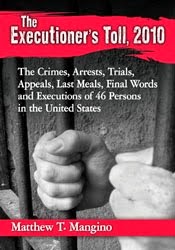A decade ago, it was extremely rare for everyday school employees to carry guns. Today, after a seemingly endless series of mass shootings, the strategy has become a leading solution promoted by Republicans and gun rights advocates, who say that allowing teachers, principals and superintendents to be armed gives schools a fighting chance in case of attack, according to The New York Times.
At least 29 states allow individuals other than police or security officials to carry guns on school grounds, according to the National Conference of State Legislatures. As of 2018, the last year for which statistics were available, federal survey data estimated that 2.6 percent of public schools had armed faculty.
In Florida, more than 1,300 school staff members
serve as armed guardians in 45 school districts, out of 74 in the state,
according to state officials. The program was created after a gunman killed 17
people at Marjory Stoneman Douglas High School in Parkland, Fla., in 2018.
In Texas, at least 402 school districts — about a
third in the state — participate in a program that allows designated people,
including school staff members, to be armed, according to the Texas Association
of School Boards. Another program, which requires more training, is used by a
smaller number of districts. Participation in both is up since 2018.
And in the weeks after the Uvalde shooting,
lawmakers in Ohio made it easier for teachers and other school employees to
carry guns.
The strategy is fiercely opposed by Democrats,
police groups, teachers’ unions and gun control advocates, who say that
concealed carry programs in schools — far from solving the problem — will only
create more risk. Past polling has shown that the vast majority of
teachers do not want to be armed.
The law in Ohio has been especially contentious
because it requires no more than 24 hours of training, along with eight hours
of recertification annually.
“That, to us, is just outrageous,” said Michael
Weinman, director of government affairs for the Fraternal Order of Police of
Ohio, the state’s largest law enforcement organization. By comparison, police
officers in the state undergo more than 700 hours of training. And school
resource officers — police assigned to campuses — must complete an additional 40
hours.
Supporters say 24 hours is enough because while police training includes everything from traffic tickets to legal matters, school employees tightly focus on firearm proficiency and active shooter response.
Studies on school employees carrying guns have
been limited, and research so far has found little
evidence that it is effective. There is also little evidence that school resource officers
are broadly effective at preventing school shootings, which are statistically
rare.
Yet arming school employees is finding appeal —
slight majorities among parents and adults in recent polls.
Of the five deadliest school shootings on record,
four — in Newtown, Conn., Uvalde, Texas, Parkland, Fla., and Santa Fe, Texas —
have happened in the last 10 years.
It was this possibility that brought Mandi and seven
other educators to a gun range tucked amid the hayfields and farm roads of
Rittman, in northeast Ohio.
Over the course of three days, Mandi practiced shooting,
tying a tourniquet and responding to fast-paced active shooter drills. Her
presence on the range, firing her pistol under the blazing sun, cut a contrast
to the classroom, where she dances to counting songs with 5-year-olds, dollops
out shaving cream for sensory activities and wallpapers her classroom with
student artwork.
That she was being trained at all spoke to the
country’s painful failure to stop mass shootings, and to the heavy
responsibilities piled onto teachers — catching students up from the pandemic, handling mental health crises in children, navigating conflicts over the teaching of race and gender and now, for
some, defending their schools.
Mandi, in her 40s, arrived at the training with
nervous anticipation. She had been a teacher for a dozen years and has children
of her own. She wanted to be sure she could carry her gun safely around
students. “I get hugs all day long,” she said.
And then there was the prospect of confronting an
actual gunman. Could three days of training prepare her for the unthinkable?
The educators had come from Ohio and as far as
Oklahoma for a 26-hour course by FASTER Saves Lives, a leading gun training
program for school employees. It is run by the Buckeye Firearms Foundation, a
Second Amendment organization that works alongside a major gun lobbying group
in Ohio. The lobbying group, the Buckeye Firearms Association, supported the
new state law for school employees.
Over the past decade, the foundation estimates it
has spent more than $1 million training at least 2,600 educators.
Its approach aligns closely with an argument that
has become a hallmark of the National Rifle Association and the gun
lobby: “The only way to stop a bad guy with a gun is a good
guy with a gun.”
In this view, teachers are the ultimate “good guys.”
To read more CLICK HERE
















